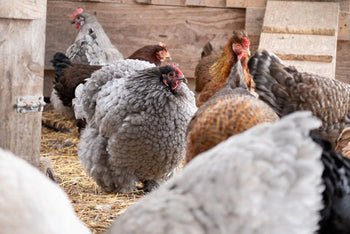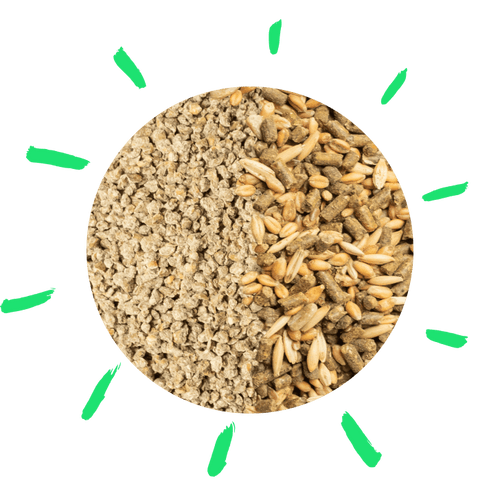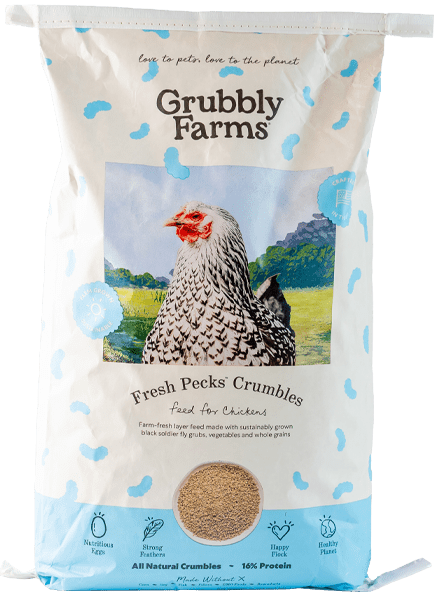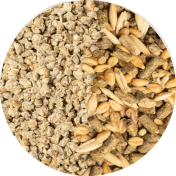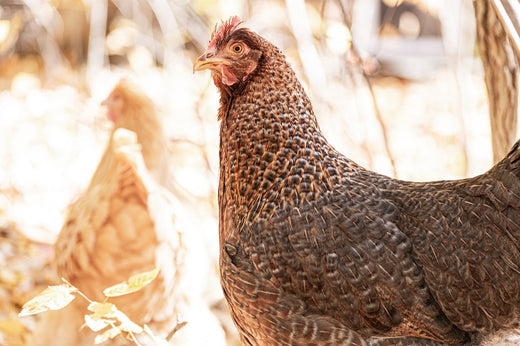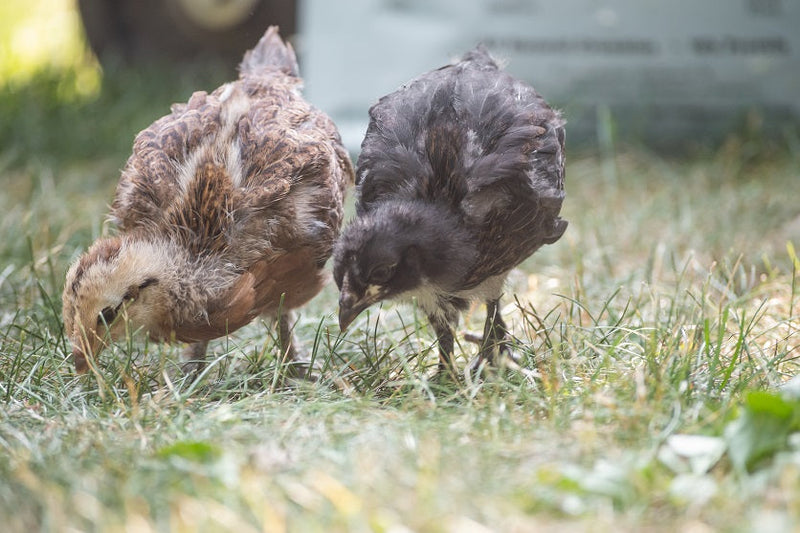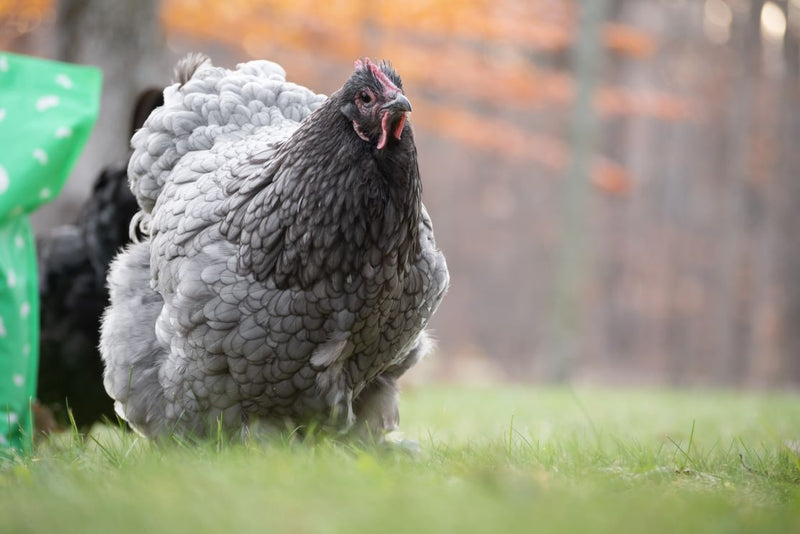Avian flu can be deadly for chickens and is a very contagious poultry disease. This may have you wondering, is my backyard flock in danger of getting avian flu? Read on to learn more about avian flu and the simple measures you can take to prevent it from affecting your flock.
What is the Avian Flu?
Avian influenza is a strain of the flu virus that affects chickens and other birds. It has become a well-known avian disease thanks to its resurging prevalence among wild and confined domestic birds.
Avian influenza, also called bird flu, is caused by several types of orthomyxoviruses. These viruses are the same ones that cause the flu in humans and other animals, like horses and pigs. They are split into three categories: type A, type B, and type C viruses. The type of virus that causes avian influenza is classified as type A.
Strains of the avian flu virus can be classified as either high-path or low-path strains. High-path strains of the avian flu are the most deadly. They spread the fastest and cause illnesses that are usually fatal. A virus strain is considered high path if it kills six out of ten birds in lab studies.
Low-path strains of the avian flu are the most common worldwide. They can cause minor or no symptoms in chickens. However, low-path flu strains can become high-path if the virus mutates as it spreads through large numbers of chickens. This is more likely to happen when many chickens are kept together in a confined space.
The most prevalent type of avian influenza virus is the H5N1 virus. In its low-path form, it is considered the North American H5N1 virus. In its high-path form, it is called the Asian H5N1 virus.
How Does the Avian Flu Spread?
Avian flu spreads through direct contact. The virus can harbor in body fluids that are excreted from the nostrils, mouth, eyes, or droppings of an infected bird. Thus, sneezing and coughing are two common ways the virus can spread from infected birds to healthy birds. Birds can also contract the virus when they come in contact with infected droppings spread by shoes or equipment.
Chickens are not natural hosts of the avian influenza virus; however, they can contract the virus from other hosts and become infected. Natural hosts of the avian influenza virus are mainly aquatic birds and waterfowl, who can be carriers of the virus even if they show no symptoms. They can spread the virus to birds of their kind and other species of birds, like chickens.
Birds that recover from the avian influenza virus remain carriers of the virus for life and can spread it to other birds even if they show no symptoms.

Symptoms of Avian Influenza in Chickens
The low-path strains of avian influenza rarely result in serious health concerns for chickens. These strains can still spread through a flock very rapidly; however, you typically won’t see a mortality rate of more than 5%. Low-path strains of avian flu mainly affect a chicken’s respiratory system, causing mild respiratory distress, decreased laying, occasional diarrhea, or no symptoms at all.
High-path strains of avian flu are much more serious and spread even faster than low-path strains. Notably, this strain can lead to death within 48 hours of infection. High-path strains infect all birds exposed to the virus and usually result in a 100% mortality rate.
The high-path virus mainly affects a chicken’s nervous and cardiovascular systems. The following are common symptoms of the high-path avian flu:
- Reduced eating or drinking
- Sudden drop in laying
- Quivering or twisted neck
- Swollen face
- Closed and runny eyes
- Lethargy
- Lack of coordination
- Breathing difficulties
- Discolored or watery droppings
- Sudden death
Unfortunately, there is no treatment for avian influenza. The best way to keep your flock safe is to follow proper biosecurity practices and prevent the spread.

Can Humans Get Avian Flu?
As we mentioned earlier, influenza viruses are categorized into three types. Virus types B and C only infect humans. Virus type A, which causes avian influenza, can infect a wide range of animals, including humans, chickens, and other animal species.
The type A virus is subdivided into 144 subtypes. Except in rare cases, most virus subtypes are species-specific and will only affect the species that they have mutated to infect. Three subtypes that can infect both humans and birds are H5, H7, and H9. These are mostly low-path viruses that pose little threat to either humans or birds who become infected. For instance, low-path subtype viruses may cause pinkeye or mild flu-like symptoms in humans.
However, within those virus subtypes, several strains are considered high-path and can cause serious symptoms in birds and humans. Virus H5N1 and virus H7N9 can cause severe pneumonia in humans. People can become infected through direct contact with dead or live birds with the virus or when exposed to infected droppings.
Thankfully, instances of humans contracting bird flu are very rare, and it does not generally spread from one person to another. Getting the bird flu is only a concern if you are in extensive direct contact with numerous infected birds.
Take these safety precautions to avoid contracting the virus from sick chickens:
- Avoid handling or being near birds that you suspect are infected with avian flu.
- If direct contact with infected birds is unavoidable, wear personal protection equipment like gloves, boots, an N95 respirator or tight-fitting mask, and eye protection.
- Avoid touching your mouth, nose, or eyes after handling birds.
- Wash your hands thoroughly after touching birds.
- Change clothes after working around birds.

How to Prevent Avian Flu in Your Backyard Chickens
Avian flu can have devastating effects on a flock once a single bird becomes infected. However, the flu is most common in large flocks kept in confined spaces where proper biosecurity practices are not in place.
For backyard flock owners, a few simple safety precautions can help reduce the risk of your flock contracting the flu. Here are some biosecurity tips to follow to keep your flock safe and healthy:
- Prevent your flock from having contact with wild birds by eliminating bird feeders and baths in the chicken yard and blocking access to ponds or open water sources where wild birds congregate.
- Wash any equipment you use with your flock thoroughly and regularly.
- Don’t share used equipment with other chicken keepers.
- Wear specific boots when caring for your flock and have visitors wear different shoes designated for entering the chicken yard.
If you suspect an avian influenza infection in your flock or wild birds in your area, report any sicknesses or deaths to your state's Department of Agriculture.
Conclusion
As scary as the bird flu sounds, you can keep yourself and your flock safe by practicing proper biosecurity and good sanitary practices. Prevention is the best treatment for avian influenza. Feeding your flock a nutritious diet, cleaning their coop daily, and providing a risk-free environment for them to forage in are all simple measures you can take to keep your flock safe and healthy!





